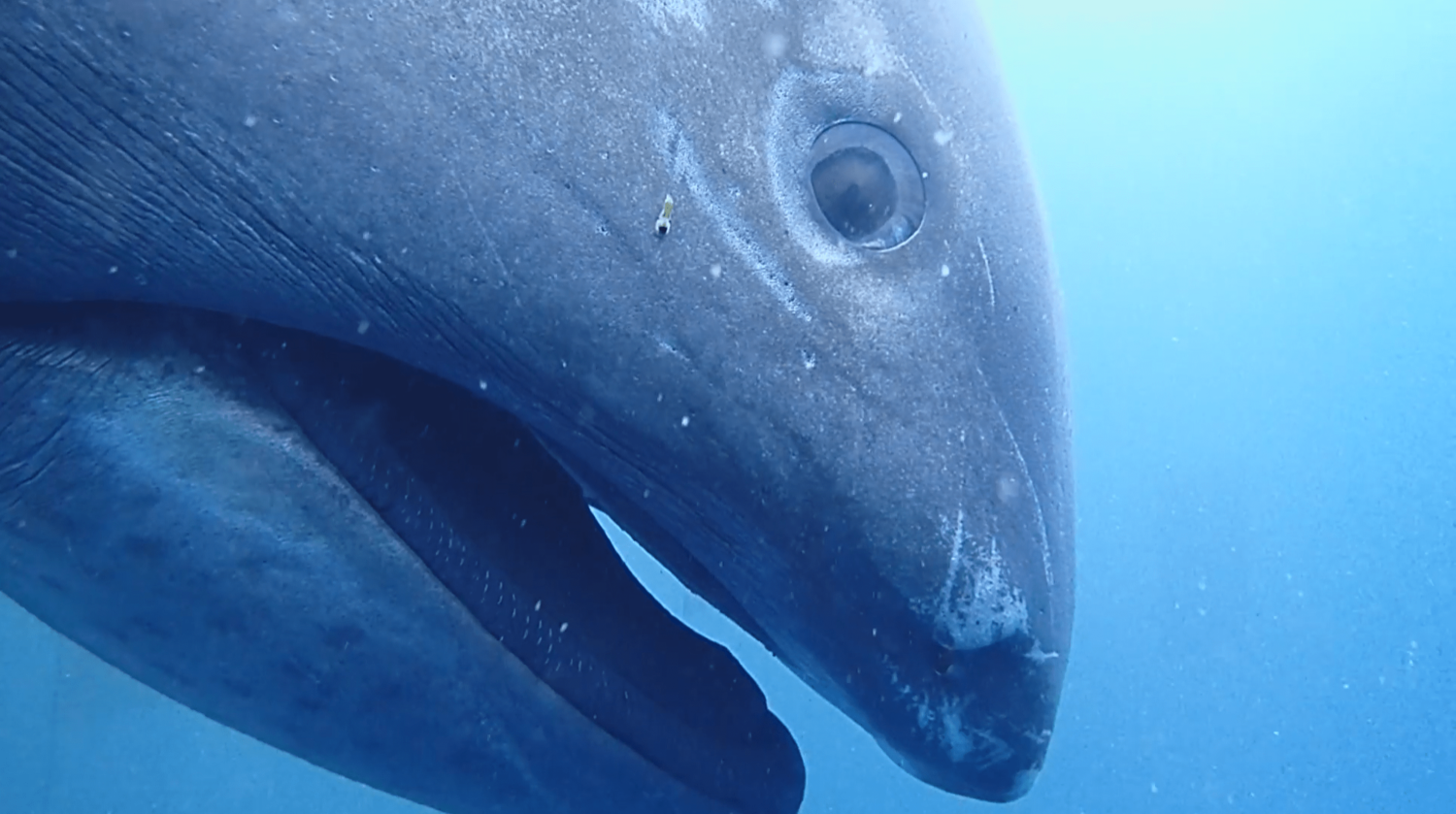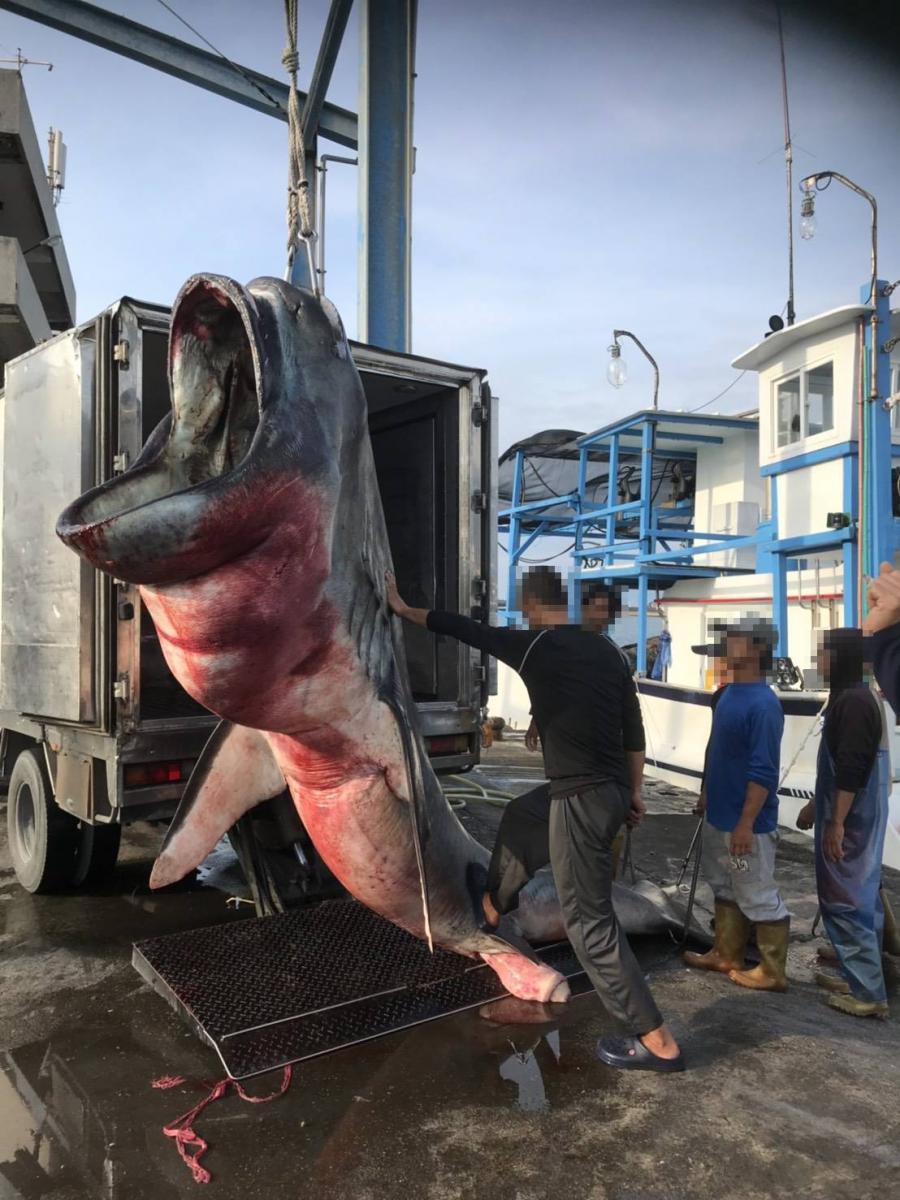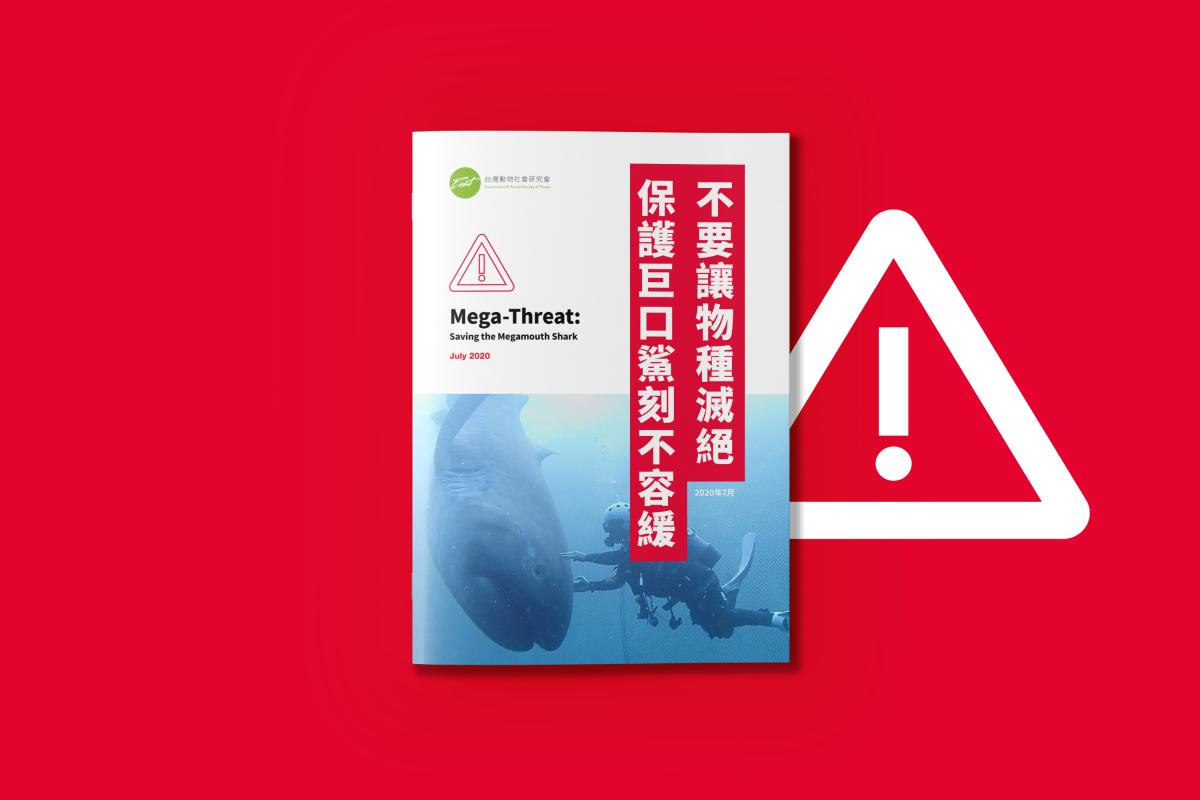Mega-threat: new report issues stark warning for rare shark species
Taiwanese NGO releases eye-opening report on the megamouth shark
On July 7, the Environment & Animal Society of Taiwan (EAST) published a comprehensive evidence-based report with recommendations for the Taiwanese government to protect the megamouth shark, one of the world's most rarely-encountered shark species.
The 72-page report assembles information from 23 pieces of academic literature focussed on the megamouth shark, academic and non-academic resources, and consultation with shark experts, and is published in English and Chinese.
Will Taiwan become the megamouth shark's final resting place?
The ground-breaking report comes in response to an unprecedented string of megamouth shark catchings in the waters off eastern Taiwan. In late June, six megamouth sharks were caught off the coast of Hualien County in four consecutive days. All six individuals were caught by a single fishing vessel.
This alarming event echoes a startling pattern in recent years that has seen a handful of fishing vessels catch a total of 72 megamouth sharks off the coast of Hualien County in 2018 and 20191, with new evidence suggesting the vessels are colluding to deliberately target this slow-moving, vulnerable species.
The megamouth shark is rarely encountered by humans. In the 34 years since its discovery in 1976, megamouth sharks have been documented a mere 236 times worldwide. 152 of these occasions have been the result of catchings by Taiwanese fishing vessels, accounting for 64% of global sightings.2
The vast majority of these catchings can be attributed to just four fishing vessels operating off the coast of Hualien. Each year, this small coterie of fishing vessels close in on this global hotspot using three kilometer-long, 130 meter-high drift nets with large 30 centimeter mesh spacings to capture megamouth sharks. Taiwan's government agencies continue to shift responsibility and blame for this untenable situation, ignoring the rampant destruction of marine ecosystems and the threat that increased fishing poses to this "intrinsically sensitive" species.
Taiwan's ancient ocean treasure
Fossils from the genus Megachasma have been found to date back to the late Eocene Epoch, suggesting the now-extinct relatives of the megamouth shark have inhabited our oceans for at least 36 million years.3
While the megamouth shark is famed for its gaping mouth, megamouth sharks are filter-feeders who feed predominately off plankton, placing them in rare company with just two other filter feeding shark species—the basking shark and the whale shark.4
Megamouth shark catching records suggest that megamouth sharks migrate northwards past Taiwan's eastern coast between April and August each year, following the warm, strong Kuroshio Current to feeding grounds abundant in Euphausia pacifica, a North Pacific krill.5 Clearly, the waters off Taiwan's eastern coast are of great importance to the survival of megamouth sharks. However, the government's incompetence and negligence puts Taiwan at risk of become the final resting place of this unique and precious species.

Why hasn't the megamouth shark been classified as an endangered species?
The International Union for Conservation of Nature (IUCN) assessed the megamouth shark to be "Data Deficient" until 2015, reflecting how little is known about this rarely-sighted species. It previously noted that "the shark is apparently very rare throughout its range." 6
In 2015 the IUCN revised its ranking to "Least Concern" based on the wide geographic spread of megamouth shark sightings, despite the glaring absence of data on megamouth shark populations or population trends.
However, the results of the world's most comprehensive study of the extinction risk of chondrichthyan fishes (which include sharks, skates, and rays) strongly dispute the premise for this decision. The landmark study Dulvy et al. 2014 found that geographic range is largely unrelated to extinction risk for chondrichthyan fishes. In fact, rather than conferring safety, the study determined that wider geographic distribution may even increase a species' risk of extinction.7
In addition, the three leading indicators of chondrichthyan extinction identified by Dulvy et al. (2014) can all be applied to the megamouth shark:
- Length (shorter length, higher threat)
The megamouth shark is the third largest known shark species
- Minimum depth (lower depth, higher threat)
The megamouth shark has a minimum depth of just 12-25 meters below the ocean's surface between dusk and dawn
- Depth range (smaller range, higher threat)
The megamouth shark has a moderate depth range of approximately 148 meters—much less than many deep-water sharks
In 2019 the IUCN declared "the Megamouth Shark had a high likelihood of being threatened with an elevated risk of extinction if it was subjected to significant fisheries." The IUCN's assessment singled out Taiwan for its concerning number of megamouth shark catchings and recommended Taiwan move to introduce a mandatory catch and release mechanism.
Government inaction to blame for rise in catchings
Accounting for geographical area, no other comparable region in the world boasts chondrichthyan fauna as diverse as Taiwan.8
Since 2013, EAST has been campaigned tirelessly for regulatory measures to protect large cartilaginous fish, including great white sharks, basking sharks, and megamouth sharks. However, few of the measures put forward at meetings of government officials, concerned legislators and civil society have ever been acted upon. Instead, government agencies have continuously shifted the blame.
In stark contrast to inaction in Taiwan, the United States instituted a comprehensive ban on megamouth shark catchings across the entire West Coast Region in 2004.

EAST urges immediate action to safeguard the megamouth shark
We urge the Taiwanese government act now to protect the megamouth shark for future generations. With more megamouth shark sightings than any other place on Earth, Taiwan can play a key role in global research efforts and allow humans to gain a better understanding of this extraordinary species.
We request:
- The Fisheries Agency act with urgency to declare a ban on megamouth shark catchings. All megamouth sharks caught as bycatch should be immediately released regardless of whether they are dead or alive, and reported to the relevant authorities. Live caught sharks should be tagged prior to release.
- The Ocean Conservation Administration designate the megamouth shark a protected species, establish conservation zones to protect key habitats, and devise comprehensive plans for conservation and scientific research.
- The Ocean Conservation Administration allocate budget to assist fishing vessels specialized in catching megamouth sharks transiting to ecological research vessels, and cooperate with international researches to further understanding of the megamouth shark, including via satellite tagging studies.
- The Ocean Conservation Administration fund scientific cooperation between Taiwan and international partners, including Japan, the Philippines, Indonesia, the United States, and Mexico, to increase understanding of megamouth shark populations and develop evidence-based domestic and international conservation measures.
Translated by Julia Lee
Media contact
Yu-Min Chen, Deputy Chief Executive
Environment and Animal Society of Taiwan (EAST)
Mobile: +886 (9) 1015 0908
Phone: +886 (2) 2236 9735
Read the report
- Read online (press
 for full screen mode)
for full screen mode) - Download the PDF











